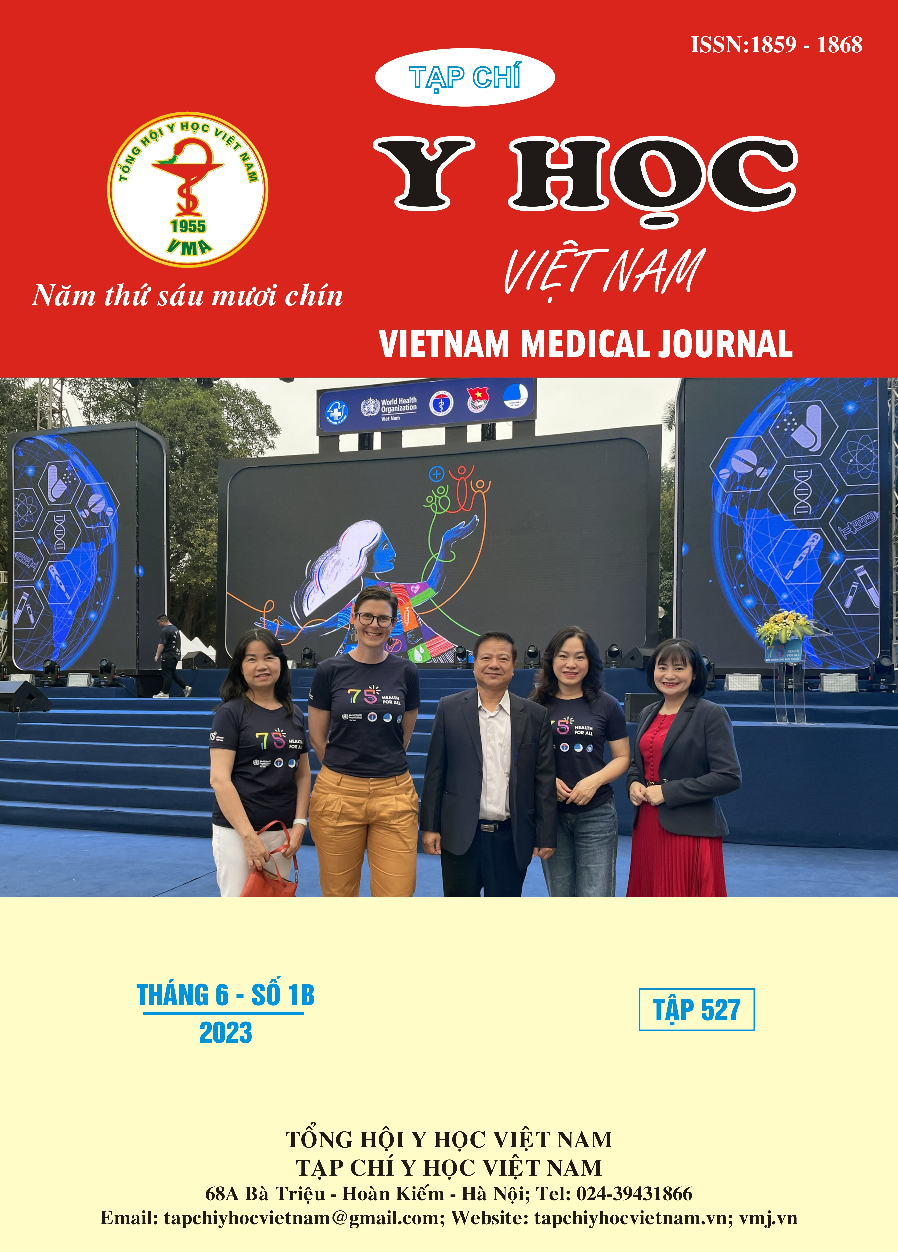SURVEY OF SITUATION OF ORAL ANTICOAGULANT TREATMENT AT OUTPATIENT DEPARTMENT – UNIVERSITY MEDICAL CENTER HO CHI MINH CITY
Main Article Content
Abstract
Introduction: Anticoagulation is one of the most important treatment method for many medical and surgical diseases. Anticoagulants have been proven effective in prevention of thromboembolic events in conditions such as atrial fibrillation, mechanical heart valves, deep venous thrombosis, etc. Results from research will contribute to a more detailed and specific assessment of anticoagulant use and results when compared with current recommendations. Objectives: Survey of situation of indications and doses of oral anticogulants in patients at Outpatient Depatment – University Medical Center Ho Chi Minh City. Methods: Retrospective, cross-sectional study of patients who were taking oral anticoagulants to follow-up appointments. Results: 237 cases assigned to oral anticoagulants to follow-up appointments from Febuary 2023 – May 3023 will full data colleced were included in the survey. Mean age 67±14.95, male: female ratio = 0.95, mean follow-up duration 23.72 ± 23.95 months. Indications for anticoagulants were atrial fibrillation (75.9%), followed by mechanical heart valves diseases (13.1%) and lower extremity deep venous thrombosis (11.8%). New oral anticoagulants (NOACs) were indicated in 77.2%, anti-vitamin K anticoagulants were indicated in 22.8%. The dose of anti-vitamin K anticoagulants were in medium range, the dose of NOACs were as current recommendations. The results of treatment were good until the end of the survey. Conclusion: Oral coagulants can be used safety and effectively in patients for whom they are indicated.
Article Details
Keywords
Oral anticoagulants, New oral anticoagulants, Anti-vitamin K anticoagulants.
References
2. Patel MR, Mahaffey KW, Garg J, et al. Rivaroxaban versus warfarin in nonvalvular atrial fibrillation. N Engl J Med. 2011;365:883–91.
3. Granger CB, Alexander JH, McMurray JJ, et al. Apixaban versus warfarin in patients with atrial fibrillation. N Engl J Med. 2011;365:981–92.
4. Steffel J, Collins R, Antz M, et al. 2021 European Heart Rhythm Association Practical Guide on the Use of Non-Vitamin K Antagonist Oral Anticoagulants in Patients with Atrial Fibrillation, EP Europace, Volume 23, Issue 10, October 2021, Pages 1612–1676. https://doi.org/10.1093/europace/euab065
5. January CT, Wann LS, Calkins H, et al. 2019 AHA/ACC/HRS Focused Update of the 2014 AHA/ACC/HRS Guideline for the Management of Patients With Atrial Fibrillation: A Report of the American College of Cardiology/American Heart Association Task Force on Clinical Practice Guidelines and the Heart Rhythm Society in Collaboration With the Society of Thoracic Surgeons. Circulation. 2019 Jul 9;140(2):e125-e151. doi: 10.1161/CIR.0000000000000665. Epub 2019 Jan 28. Erratum in: Circulation. 2019 Aug 6;140(6):e285. PMID: 30686041.
6. Hindricks G, Potpara T, Dagres N, et al. 2020 ESC Guidelines for the diagnosis and management of atrial fibrillation developed in collaboration with the European Association for Cardio-Thoracic Surgery (EACTS): The Task Force for the diagnosis and management of atrial fibrillation of the European Society of Cardiology (ESC) Developed with the special contribution of the European Heart Rhythm Association (EHRA) of the ESC. European Heart Journal 2021, 42(5): 373–498.
7. Leiria TLL, Pellanda LC, Magalhães E, et al. Comparative Study of a Portable System for Prothrombin Monitoring Using Capillary Blood against Venous Blood Measurements in Patients Using Oral Anticoagulants: Correlation and Concordance. Arq Bras Cardiol 2007; 89(1) : 1-5.
8. Eşkut N, Tamer P, Küsbeci ÖY, Ataç C, İnci İ. Evaluation of Time in Therapeutic Range in Patients with Cerebrovascular Disease Receiving Treatment with Warfarin. MKÜ Tıp Dergisi 2021;12(43):88-93.


